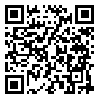Volume 1 - Supplement Issue 1: Abstracts of International Tehran Breast Cancer Congress
Multidiscip Cancer Investig 2017, 1 - Supplement Issue 1: Abstracts of International Tehran Breast Cancer Congress: 0-0 |
Back to browse issues page
Abstract: (4634 Views)
Introduction: Hub genes are connected to many other genes by encoding proteins that interact directly with DNA molecules or other proteins. These hubs can act as transcription factors more than controlling expression of genes. Finding these genes is substantial in detection of the main controller of the pathways of diseases such as cancer, designing treatments regarding them and furthermore a probable direct treatment to the disease.
Materials and Methods: In this study, we used a dataset (GSE28274) of treated breast cancer cell line MCF7 via cisplatin. We analyzed data of cells in glycolysis and impedance stages versus control cells using GEO2R to determine significantly (p-value less than 0.05) differentially expressed genes. Threshold for choosing the genes were amounts of ±1.2 of log2 Fold change. Then, we detected transcription factors of differentially expressed genes using ChEA database. Networks of differentially expressed transcription factors were constructed and functional annotations and biological pathways were detected by DAVID database.
Results: Our results showed that there are 9 and 13 differentially expressed transcription factors in glycolysis and impedance stages of the treated cells, respectively. In both stages there were six identical transcription factors with similar expression patterns except for PPARA. Annotation assignments revealed that the transcription factors are related to gene expression process, signaling and cancer pathways.
Conclusions: In conclusion, our study is offering some potential transcription factors as hub genes that affect gene expression processes and cancer pathways.
Materials and Methods: In this study, we used a dataset (GSE28274) of treated breast cancer cell line MCF7 via cisplatin. We analyzed data of cells in glycolysis and impedance stages versus control cells using GEO2R to determine significantly (p-value less than 0.05) differentially expressed genes. Threshold for choosing the genes were amounts of ±1.2 of log2 Fold change. Then, we detected transcription factors of differentially expressed genes using ChEA database. Networks of differentially expressed transcription factors were constructed and functional annotations and biological pathways were detected by DAVID database.
Results: Our results showed that there are 9 and 13 differentially expressed transcription factors in glycolysis and impedance stages of the treated cells, respectively. In both stages there were six identical transcription factors with similar expression patterns except for PPARA. Annotation assignments revealed that the transcription factors are related to gene expression process, signaling and cancer pathways.
Conclusions: In conclusion, our study is offering some potential transcription factors as hub genes that affect gene expression processes and cancer pathways.
Select article type: Original/Research Article |
Subject:
Materials Science and Nanomedicine
Received: 2017/10/29 | Accepted: 2017/10/29 | ePublished: 2017/10/29
Received: 2017/10/29 | Accepted: 2017/10/29 | ePublished: 2017/10/29
| Rights and permissions | |
 |
This work is licensed under a Creative Commons Attribution-NonCommercial 4.0 International License. |




